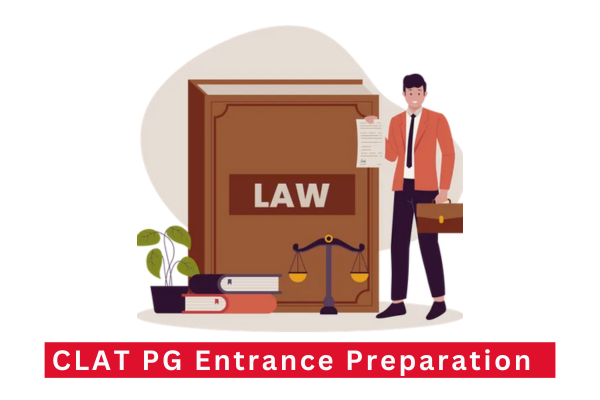
Adversarial vs. Inquisitorial Legal Systems: Exploring the Differences and Debates
The legal systems around the world can be broadly categorized into two main types: adversarial and inquisitorial systems. These systems define how trials are conducted, how evidence is presented, and how the truth is sought in a court of law. The adversarial system, commonly used in common law jurisdictions like England and the United States, relies on opposing parties presenting their cases and competing to convince the judge and jury. On the other hand, the inquisitorial system, prevalent in countries like France and Italy, involves a judge who actively investigates the case, questioning witnesses, and seeking the truth.
In this article, we will delve deep into the characteristics, advantages, and limitations of both systems. We will explore which countries follow each system, analyze the crime rates in these countries, and discuss the pros and cons of each approach. By the end, we hope to shed light on the ongoing debate regarding which system is better suited for the assessment and evaluation of facts.
1. Introduction
The adversarial and inquisitorial systems of justice represent two contrasting approaches to conducting trials in a court of law. In the adversarial system, the parties act as adversaries, presenting their cases and attempting to convince the judge and jury of their version of the facts. The judge plays a passive role, presiding over the trial, ruling on procedural matters, and providing guidance on matters of law. In contrast, the inquisitorial system involves a judge who actively investigates the case, questioning witnesses, and seeking the truth.
The choice between these systems can have significant implications for the administration of justice, the rights of the accused, and the search for truth. While the adversarial system is prevalent in common law jurisdictions like England and the United States, the inquisitorial system is common in countries like France and Italy. Each system has its strengths and weaknesses, and the ongoing debate centers around which approach is better suited for achieving justice.
In the following sections, we will explore the characteristics, processes, pros, and limitations of both systems. We will also examine the crime rates in countries that follow each system and discuss the specific provisions of Article 20(3) in the Indian Constitution. Additionally, we will delve into the concept of plea bargaining within the adversarial system and evaluate the advantages and limitations of this approach. Finally, we will analyze the adoption of the adversarial system in India and offer concluding thoughts on the debate between adversarial and inquisitorial systems of justice.
2. The Adversarial System
The adversarial system is the dominant approach to conducting trials in common law jurisdictions like England and the United States. It is characterized by the opposing parties acting as adversaries, presenting their cases and competing to convince the judge and jury of their version of the facts. The judge plays a passive role, ensuring procedural fairness, ruling on evidentiary matters, and providing guidance on matters of law.
Characteristics and Processes
In the adversarial system, each party is responsible for presenting its case and supporting it with evidence. The lawyers have the freedom to choose which issues to present, what evidence to adduce, and which witnesses to call. The judge's role is to ensure the trial proceeds fairly, ruling on disputed matters, and providing guidance on legal principles.
The trial begins with opening statements from each party, outlining their version of the facts and the evidence they intend to present. The prosecution presents its case first, calling witnesses, and introducing evidence to support its allegations. The defense then has the opportunity to cross-examine the prosecution's witnesses and present its own evidence, including witnesses and expert testimony.
After the presentation of evidence, both parties make closing arguments, summarizing their case and highlighting the strengths of their evidence. The judge then provides instructions to the jury, explaining the relevant legal principles and the standard of proof required for conviction. The jury deliberates and reaches a verdict based on the evidence presented during the trial.
Pros of the Adversarial System
The adversarial system has several advantages that contribute to its widespread adoption:
- Presumption of innocence: The system operates on the principle that the accused is presumed innocent until proven guilty beyond a reasonable doubt. This places the burden of proof on the prosecution, ensuring that the accused is not wrongfully convicted.
- Protection of individual rights: The adversarial system emphasizes the protection of individual rights, including the right to legal representation, the right to cross-examine witnesses, and the right to a fair trial. These rights are essential for ensuring due process and safeguarding against potential abuses of power.
- Efficiency and speed: The adversarial system is generally more efficient and speedy compared to the inquisitorial system. The emphasis on presenting evidence and arguments allows for a streamlined process, reducing the time and resources required for each trial.
- Promotes advocacy skills: The adversarial system encourages lawyers to develop strong advocacy skills, including the ability to present compelling arguments, cross-examine witnesses effectively, and analyze evidence critically. This fosters a competitive legal environment that benefits both the legal profession and the pursuit of justice.
- Transparency and public scrutiny: Trials conducted under the adversarial system are generally open to the public, allowing for transparency and public scrutiny. This ensures accountability and promotes public confidence in the judicial process.
Limitations and Criticisms
Despite its advantages, the adversarial system is not without limitations and criticisms:
- Truth-seeking challenges: Critics argue that the adversarial system may not always prioritize the search for truth. The focus on advocacy and persuasion can lead to a distortion of facts and a disregard for the objective truth of a case. The adversarial nature of the process may incentivize lawyers to prioritize winning over truth-seeking, potentially undermining the accuracy of outcomes.
- Inequality of resources: The adversarial system heavily relies on the resources available to each party. Parties with greater financial means may be able to afford better legal representation, expert witnesses, and access to evidence, creating an imbalance of power. This can result in unequal outcomes and undermine the principle of equal access to justice.
- Emphasis on technicalities: The adversarial system often places significant emphasis on procedural and evidentiary rules. This can lead to a focus on technicalities and legal loopholes, diverting attention from the substantive issues of a case. Critics argue that this can undermine the pursuit of justice and result in outcomes that are perceived as unjust.
- Reliance on skilled advocates: The effectiveness of the adversarial system is highly dependent on the skills and abilities of the lawyers involved. Skilled advocates may be able to sway the jury or judge through persuasive arguments and effective cross-examination, potentially influencing the outcome of a case. This raises concerns about the impact of advocacy skills on the fairness of the trial.
- Limited role of the judge: In the adversarial system, the role of the judge is primarily limited to ensuring procedural fairness and ruling on evidentiary matters. Critics argue that this passive role may not be sufficient in cases where the judge possesses valuable expertise or knowledge relevant to the issues at hand. The limited involvement of the judge may restrict the ability to fully explore and evaluate the evidence.
3. The Inquisitorial System
The inquisitorial system is prevalent in civil law jurisdictions, with countries like France and Italy adopting this approach to conducting trials. In the inquisitorial system, the judge takes on an active role in investigating the case, questioning witnesses, and seeking the truth. The focus is on ascertaining the facts and determining the guilt or innocence of the accused based on a thorough examination of the evidence.
Characteristics and Processes
In the inquisitorial system, the judge, often referred to as the "juge d'instruction" or investigating magistrate, conducts an inquiry into the case. The judge is not limited to hearing the submissions of the parties but can direct the lawyers to address specific points or call particular witnesses. The judge has the authority to question witnesses directly and can issue search warrants and examine evidence.
The judge's role is to conduct a comprehensive investigation, examining both incriminating and exculpatory evidence. The judge aims to discover the truth and determine the guilt or innocence of the accused based on the evidence presented during the investigation. If the judge concludes that there is a case against a particular suspect, the matter proceeds to trial, which then takes on an adversarial format.
During the trial, the judge remains actively involved, questioning witnesses and ensuring a thorough examination of the evidence. The judge has the authority to call witnesses, request additional evidence, and direct the course of the trial. At the conclusion of the trial, the judge makes the final ruling, taking into account the evidence presented and the legal principles applicable to the case.
Pros of the Inquisitorial System
The inquisitorial system offers several advantages that contribute to its adoption in certain jurisdictions:
- Focus on truth-seeking: The primary goal of the inquisitorial system is to seek the truth and determine the guilt or innocence of the accused based on a thorough examination of the evidence. The active role of the judge in investigating the case allows for a comprehensive review of the facts, potentially enhancing the accuracy of outcomes.
- Reduced reliance on adversarial tactics: In the inquisitorial system, the focus is on evaluating the evidence rather than engaging in adversarial tactics. This can reduce the potential for distortion or manipulation of facts, promoting a more objective assessment of the case.
- Expertise of the judge: The inquisitorial system allows for the utilization of the judge's expertise and knowledge in evaluating the evidence and determining the outcome of the case. The judge's active involvement can provide valuable insights and ensure a thorough examination of the issues at hand.
- Efficiency and speed: The inquisitorial system can be more efficient and speedy compared to the adversarial system. The judge's active role in investigating the case prior to trial ensures that the evidence is thoroughly reviewed, potentially reducing the need for lengthy and contentious trial proceedings.
- Less reliance on oral testimony: In the inquisitorial system, the judge has the authority to consider a wide range of evidence, including written documents, expert reports, and physical evidence. This reduces the reliance on oral testimony, which can be subject to inconsistencies and biases.
Limitations and Criticisms
Despite its advantages, the inquisitorial system is not without limitations and criticisms:
- Potential for bias: Critics argue that the inquisitorial system places significant power in the hands of the judge, potentially leading to bias or abuse of authority. The judge's active role in investigating the case may result in a lack of checks and balances, raising concerns about the impartiality of the process.
- Lack of transparency and public scrutiny: Unlike the adversarial system, where trials are often open to the public, the inquisitorial system tends to be more closed and secretive. This can limit public scrutiny and accountability, potentially undermining public confidence in the judicial process.
- Limited role for the defense: In the inquisitorial system, the defense may have a more limited role compared to the adversarial system. The judge, as the primary investigator, controls the direction of the case, potentially limiting the ability of the defense to fully present its case or challenge the prosecution's evidence.
- Potential for inefficiency and delays: While the inquisitorial system can be more efficient in certain cases, critics argue that it can also lead to inefficiencies and delays. The extensive investigation conducted by the judge prior to trial may result in lengthy pre-trial procedures, potentially prolonging the time it takes to reach a verdict.
- Risk of wrongful convictions: Despite its focus on truth-seeking, the inquisitorial system is not immune to the risk of wrongful convictions. The judge's active role in the investigation may still be subject to errors, biases, or incomplete information, potentially leading to unjust outcomes.
4. Crime Rates in Adversarial System Countries
One of the factors often considered when comparing the adversarial and inquisitorial systems is the crime rates in countries that follow each system. Adversarial system countries, such as the United States, England, and Australia, have varying crime rates depending on factors like socio-economic conditions, cultural norms, and law enforcement strategies.
It is essential to note that attributing crime rates solely to the legal system is challenging, as multiple factors contribute to crime rates, including social, economic, and cultural factors. Moreover, crime rates can fluctuate over time, making it difficult to draw definitive conclusions. However, examining general trends can provide some insights.
Adversarial system countries like the United States have often faced criticism for their high crime rates compared to countries that follow the inquisitorial system. Factors such as socio-economic disparities, racial tensions, and a heavily litigious culture can contribute to higher crime rates. However, it is important to approach such comparisons with caution, as crime rates are influenced by a multitude of complex factors beyond the legal system alone.
5. Crime Rates in Inquisitorial System Countries
In countries that follow the inquisitorial system, such as France and Italy, crime rates can vary depending on factors specific to each country. It is important to consider socio-economic conditions, cultural norms, and law enforcement strategies when analyzing crime rates.
While it is commonly believed that countries with an inquisitorial system have lower crime rates compared to adversarial system countries, it is not necessarily a direct correlation. Crime rates are influenced by a wide range of factors, including social, economic, and cultural variables. Additionally, the effectiveness of the legal system itself in deterring and addressing crime is just one element among many.
A comprehensive analysis of crime rates in inquisitorial system countries reveals a complex picture. Factors such as socio-economic disparities, immigration patterns, and historical contexts can impact crime rates. It is important to avoid oversimplification and recognize that crime rates are influenced by multiple interconnected factors.
6. Article 20(3) of the Indian Constitution
Article 20(3) of the Indian Constitution, which guarantees protection against self-incrimination, plays a significant role in the Indian legal system. It states that no person accused of an offense shall be compelled to be a witness against themselves.
The provision is aligned with the principles of the adversarial system, which places a heavy emphasis on protecting the rights of the accused. It ensures that individuals cannot be forced to provide evidence against themselves, preserving the presumption of innocence.
However, it is essential to note that the concept of self-incrimination can vary in different contexts and cases. While Article 20(3) protects individuals from being compelled to incriminate themselves, it does not necessarily prevent them from admitting guilt voluntarily or through plea bargaining, which we will explore further.
7. Plea Bargaining in the Adversarial System
Plea bargaining is a significant aspect of the adversarial system, allowing for the resolution of criminal cases through negotiation between the prosecution and the defense. It involves the accused agreeing to plead guilty to a lesser charge or for a reduced sentence in exchange for a concession from the prosecution.
Pros and Limitations of Plea Bargaining
Plea bargaining has its advantages and limitations within the adversarial system:
Pros of Plea Bargaining
- Efficiency and reduced caseload: Plea bargaining can help alleviate the burden on the court system by resolving cases quickly and efficiently. It allows for the resolution of cases without the need for lengthy trials, saving time and resources.
- Encourages cooperation and truthfulness: Plea bargaining can incentivize defendants to cooperate with the prosecution by providing information or testifying against co-conspirators. This can aid in the pursuit of justice and the discovery of the truth.
- Flexibility in sentencing: Plea bargaining allows for flexibility in sentencing, giving judges the ability to consider individual circumstances and tailor sentences accordingly. This can result in more proportionate and fair outcomes.
- Reduces trauma for victims and witnesses: Plea bargaining can spare victims and witnesses from the trauma of testifying in court. It provides an avenue for resolution without subjecting them to the stress of trial proceedings.
Limitations of Plea Bargaining
- Risk of coercion and undue pressure: Critics argue that plea bargaining can result in defendants feeling coerced or pressured into pleading guilty, even if they are innocent or have a valid defense. This raises concerns about the potential for wrongful convictions.
- Inequities and disparities: The outcome of plea bargaining can be influenced by factors such as race, socio-economic status, and legal representation. Defendants with limited resources may be at a disadvantage, leading to disparities in outcomes.
- Potential for undercharging or overcharging: The prosecution's discretion in offering plea bargains can result in undercharging or overcharging of offenses. This can lead to outcomes that do not adequately reflect the seriousness of the crime or the culpability of the defendant.
- Transparency and public perception: Plea bargaining often takes place behind closed doors, away from public scrutiny. This can raise concerns about transparency and accountability, potentially undermining public confidence in the judicial process.
It is important to strike a balance between the advantages and limitations of plea bargaining, ensuring that it is used judiciously and in a manner that upholds the principles of justice and fairness.
8. Which System is Better?
The question of which system is better, the adversarial or the inquisitorial, is a subject of ongoing debate among legal scholars and practitioners. Both systems have their strengths and weaknesses, and the choice of system depends on various factors, including historical, cultural, and legal considerations.
The adversarial system emphasizes individual rights, the presumption of innocence, and the protection against self-incrimination. It promotes the role of skilled advocates, the pursuit of truth through adversarial competition, and public scrutiny of the judicial process. However, critics argue that the adversarial system may prioritize winning over truth-seeking, create inequalities, and place excessive emphasis on procedural technicalities.
On the other hand, the inquisitorial system focuses on seeking the truth through active judicial investigation, reducing reliance on adversarial tactics, and utilizing the expertise of the judge. It can be more efficient, provide a more comprehensive review of evidence, and reduce the potential for manipulation of facts. However, concerns about judicial bias, lack of transparency, and limitations on the role of the defense have been raised.
Ultimately, the choice between the adversarial and inquisitorial systems depends on the legal traditions, cultural values, and societal norms of each jurisdiction. Different countries have adopted different systems based on their unique contexts and historical developments. It is essential to continually evaluate and refine these systems to ensure they uphold the principles of justice, fairness, and the pursuit of truth.
9. The Adoption of the Adversarial System in India
India, as a former colony of the British Empire, adopted the adversarial system of justice during the colonial period. The system was carried forward post-independence and continues to be the predominant approach to conducting trials in Indian courts.
The adversarial system in India is governed by the Code of Criminal Procedure, which outlines the procedures and rules for conducting criminal trials. It emphasizes key principles such as the presumption of innocence, the burden of proof on the prosecution, and the right to a fair trial. The system allows for the presentation of evidence, cross-examination of witnesses, and the opportunity for the accused to mount a defense.
While the adversarial system has its advantages, India, like many other countries, faces challenges in ensuring equal access to justice, addressing delays in the legal system, and enhancing the efficiency of trials. Efforts are being made to address these challenges and modernize the Indian legal system, with initiatives such as the introduction of technology-enabled courts and alternative dispute resolution mechanisms.
10. Conclusion
The debate between the adversarial and inquisitorial systems of justice continues to shape legal systems around the world. Both systems have their strengths and weaknesses, and the choice of system depends on various factors, including historical, cultural, and legal considerations.
The adversarial system, prevalent in common law jurisdictions, emphasizes individual rights, the presumption of innocence, and protection against self-incrimination. It promotes the role of skilled advocates, adversarial competition, and public scrutiny. However, concerns about truth-seeking, inequalities, and procedural technicalities have been raised.
The inquisitorial system, common in civil law jurisdictions, focuses on seeking the truth through active judicial investigation and reducing reliance on adversarial tactics. It can be more efficient, provide a comprehensive review of evidence, and reduce the potential for manipulation of facts. However, concerns about judicial bias, lack of transparency, and limitations on the role of the defense have also been raised.
Ultimately, the choice of system depends on the legal traditions, cultural values, and societal norms of each jurisdiction. It is important to continually evaluate and refine these systems to ensure they uphold the principles of justice, fairness, and the pursuit of truth.
In India, the adversarial system has been adopted, and efforts are being made to address challenges and modernize the legal system. As legal education continues to evolve, law students will play a crucial role in shaping the future of the Indian legal system. By studying and understanding the strengths and limitations of different legal systems, law students can contribute to the ongoing debates and work towards a more just and effective legal system.


.png)




.png)
